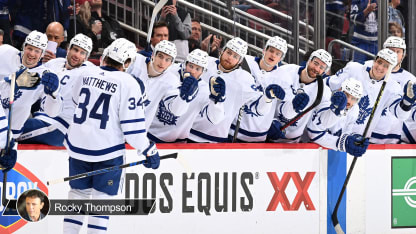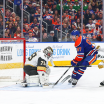Even with the issues they face, I don't believe the Maple Leafs are going to have any problem qualifying for the playoffs. It's at that point of the season where the rubber's going to hit the road, or not.
The power play, a strength during the regular season when you can sometimes just skill it through, is very capable but this can be more challenging in the postseason when you're going in against the same team for up to seven straight games. It's something they've run into before, where the power play has let them down at crunch time.
When the playoffs start, it becomes more tight checking and big leads are hard to come by. How Toronto will play when it has that one-goal lead is what draws my interest.
I currently feel the Maple Leafs could be more responsible, particularly with their defense. Their offensive-zone activation could be more focused and situational, less risky. In the neutral zone, their defensemen tend to be on the wall and step forward, almost pinching into the opposition's forwards and leaving them vulnerable to odd-man rushes.
By deactivating the defensemen slightly while maintaining a good gap and absorbing pressure, as opposed to meeting it head-on, would limit the potential for 2-on-1s against, plus denying possession entries more effectively. Puck management from the forwards late in shifts will yield positive results as well, when to attack, when to manage the puck.
I'm not suggesting sitting back, but rather a more cerebral attack both with and without the puck. When it gets to crunch time and leading a game, I'd like to see Toronto force the opposition to come through more numbers. The Lightning had to learn this the hard way before winning and, like them, I feel the Maple Leafs are really close.
Campbell's rise into a Vezina Trophy contender, given to the best goalie in the NHL, is a great sign and is going to help the Maple Leafs, but it can't all be on him to close games. He'll need support, and that's with Toronto's possession game and the execution of its structure defending. When you reach the playoffs, every team remaining will be as good as the Maple Leafs, so the challenge will be substantial, no matter who they face in the Atlantic Division.


















